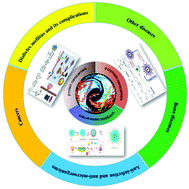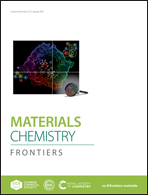Recent development and advances in the fabrication and biomedical applications of nanoparticle-based drug delivery systems for metformin
Abstract
Metformin (MET) is an important oral hypoglycemic agent for type 2 diabetes via inhibiting gluconeogenesis in the liver and increasing the sensitivity of the receptor to insulin. It also displays a wide range of therapeutic effects towards many other diseases, including different kinds of cancers, bone disorders, inflammation and even aging and microbial infections. Despite its widespread clinical applications, administration of MET in clinics is still restricted due to the relatively low bioavailability, short half-life, and side effects. To overcome these limitations, various types of nanoparticulate drug delivery systems, including proteins, polymers and inorganic nanoparticles for loading and delivering MET, have been reported. In this review, nanoparticle-based drug delivery systems for delivering MET are summarized in the first part. The biomedical applications of these nanoparticle-based drug delivery systems are introduced in the following section. Finally, the combination therapy based on the drug delivery systems for MET is also discussed. We trust that this review article will attract great attention from scientists from chemistry, materials, biological and medical fields.



 Please wait while we load your content...
Please wait while we load your content...